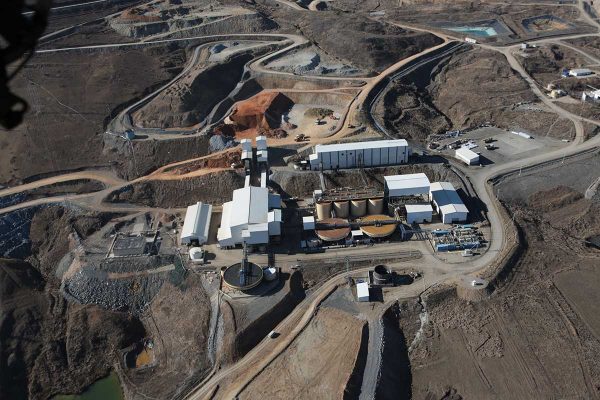Anglo Asian Mining plc (LON:AAZ) is the topic of conversation when Hardman and Co’s Analyst Paul Mylchreest caught up with DirectorsTalk for an exclusive interview.
Q1: Can you give us an overview of Anglo Asian Mining?
A1: The company produces gold (mainly), silver and copper from 4 mines in the Lesser Caucasus region of western Azerbaijan. Three of the mines are located at its flagship 300 sq. km Gedabek complex and a fourth, Gosha, is located 50km to the north west.
They has also invested heavily in downstream processing facilities, which include a heap leaching operation, an agitation leaching plant (at a cost of $45m) and a flotation plant, which allow the company to produce gold dore bars and copper concentrate.
In 2019, the company produced 81,399 gold equivalent ounces, of which 70,098 oz. was actual gold, paid a dividend of $0.08/share and ended the year with net cash of $21.2m on its balance sheet (including cash in transit).
Jurisdiction is often vital in the mining sector and Azerbaijan has a strong track record in the resources sector, although predominantly in oil and gas up to now. The production sharing agreement that the company has negotiated with the Government of Azerbaijan is essentially the same as the one BP negotiated in oil and gas.
Senior management is a mixture of Azeri, British and US nationals (incl. former White House chief of staff) and the Azeris have close ties to their government. The President of Azerbaijan conducted the opening ceremony of the first mine at Gedabek in 2009.
Q2: What sets them apart from the “average” junior mining company?
A2: The vast majority of junior mining companies are exploration plays which, in contrast to AAZ, don’t have any production and, in terms of finance, are typically operating on a hand-to-mouth basis. They have no need to raise additional capital in the foreseeable future, if ever.
In terms of financial metrics, the outstanding aspect of the company is it cash generation, which is primarily due to its low-cost production. The company’s all-in sustaining cost (or AISC) per ounce of gold production for FY 2019 was $591, which puts it comfortably in the lowest quartile for the gold mining industry cost curve globally. In terms of the S&P Global Market Intelligence’s 2019 cost curve, they are bordering on the lowest decile.
There are four main reasons for the low-cost structure are: i) its Azerbaijani jurisdiction; ii) predominance of open pit mining; iii) access to the national power grid; and iv) investment in efficient downstream processing facilities.
To give you an indication of their cash-generative ability, the company began 2018 with net debt of $18.1m, ended 2018 with net cash of $6.1m and ended 2019 with net cash of $21.2m.
Q3: You have recently extended your financial model for the company from 2025 to 2032, can you explain why?
A3: In our last report, our model was based on a conservative seven-year production timeline from 2019 to 2025. This involved the exploiting the remaining more than 400,000 oz of Proved and Probable gold reserves for the Gedabek open pit, Gadir and Ugur (along with the copper and silver). During 2026-32, we are now including the additional 553,200 oz of Measured and Indicated (M&I) gold resources over and above the Proved and Probable reserves.
By trying to be conservative, we had been overly cautious in our production estimates. We need to emphasise that M&I resources are generally sufficient for junior mining companies to base a mine plan. It’s now reasonable to include these, especially in light of two factors:
Firstly, the company will publish new resources/reserve estimates for the Gedabek and Gadir open pits this year. A new resource/reserve estimate is also possible for Ugur, although we understand that the ability to produce beyond the current reserves estimate may be communicated more informally; and
Secondly, the company has pursued a more aggressive approach to exploration with expenditure more than quadrupling since 2017 to $4.5m last year. The initial benefits are already being seen and the company is planning to commission production from mineable extensions to three existing mines – including an underground mine beneath the Gedabek open pit – in the first quarter of 2023. We expect publication of resource estimates for these projects as well in due course.
Q4: Despite the upgrade to production estimates, you made it clear in the report that you still see substantial upside in Anglo Asian’s potential. Indeed, the title of the report is “Small-cap gold miner with big cap potential.”.
A4: On 21 May 2020, AAZ published its “Strategic Update”, a key part of which was the identification of five exploration targets, which the company plans to fast track into production within three years.
- Avshancli 1 and Avshancli 3 – in the north east of the Gedabek Contract Area;
- Gilar – near to Avshancli;
- Zefer Cell 9 – near the processing facilities at Gedabek; and
- Ugur Deeps – several hundred metres from the Ugur open pit.
The update noted that budgets and work programmes have been developed for each target in order to define mineral zones, delineate resources and convert resources into reserves.
The strategic update was an important step towards the company’s ultimate potential of operating two major mineralised “systems”. The first would obviously be based on the Gedabek area, which could be a large epithermal-porphyry system of gold-silver-copper mineralisation. All five of these recently identified fast-track exploration targets are located here.
The second is the Ordubad deposit, which covers an area of 462 sq. km and is located in the south east corner of the Nakhchivan Autonomous Republic of Azerbaijan. In the run-up to the IPO in 2005, Ordubad – and not Gedabek – was the company’s focus in terms of developing its first mine.
There are currently 15 known deposits at the Ordubad site, six of which had resource estimates that were classified during the Soviet era. In total, these amounted to 1.1m oz. of M&I resources. After a hiatus of about a decade, exploration work has been ramping up since 2018 and Ordubad could become a large copper-gold porphyry mine.
Q5: Can you outline some of the key investment criteria relating to Anglo Asian Mining?
A5: I’d make three points in terms of investment criteria:
Firstly, we have calculated a fair value based on a DCF valuation, using a discount rate of 8% and an average gold price of $1,600/oz, of 181p pence per share.
This valuation also includes significant stockpiles of copper and gold in ore and in the tailings dam, which amount to 87,000 oz. of gold and 10,900 tonnes of copper. While the company cautions that it’s got more work to do on establishing the route to extract this metal, we are assuming fairly modest recovery levels of 60% for both gold and copper, respectively.
Secondly, we mentioned the company’s cash generation, which is prodigious. We estimate that during the 13 years from 2020-32, the annual free cashflow (defined as net income + depreciation and amortisation – capital expenditure) will average $20m.
During the forecast period, we estimate the aggregate free cashflow generation will be $258m, far in excess of the stock’s current market capitalisation of $177m. Obviously, if it doesn’t find some attractive new mines to invest in, the company will need to significantly increase its pay-out ratio, which is currently set at 25%.
Finally, in terms of the current year, we estimate a free cashflow yield of 19.3% and if the company pays a 10.5c/share dividend as we expect, it implies a dividend yield on the stock of 6.8%.






































